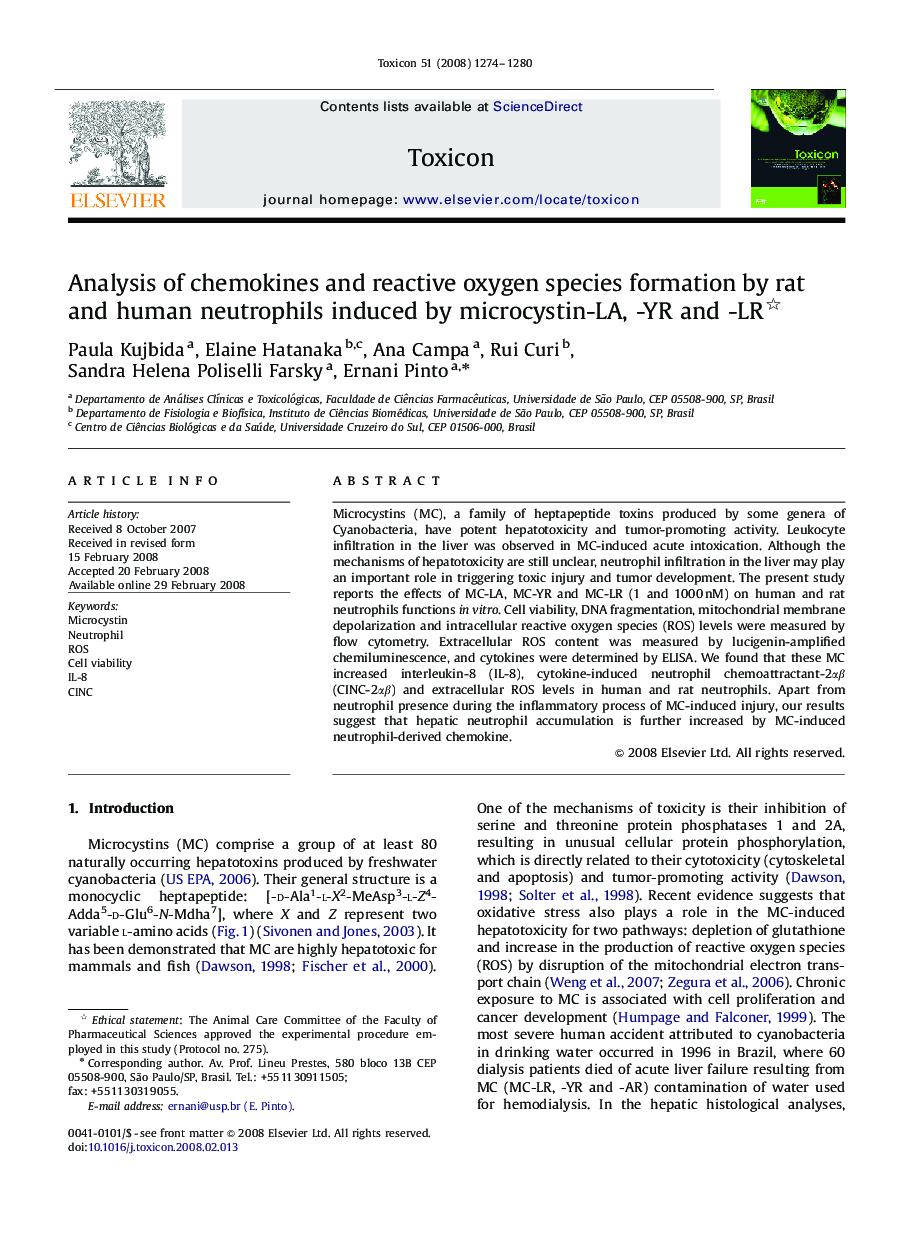| Article ID | Journal | Published Year | Pages | File Type |
|---|---|---|---|---|
| 2065226 | Toxicon | 2008 | 7 Pages |
Microcystins (MC), a family of heptapeptide toxins produced by some genera of Cyanobacteria, have potent hepatotoxicity and tumor-promoting activity. Leukocyte infiltration in the liver was observed in MC-induced acute intoxication. Although the mechanisms of hepatotoxicity are still unclear, neutrophil infiltration in the liver may play an important role in triggering toxic injury and tumor development. The present study reports the effects of MC-LA, MC-YR and MC-LR (1 and 1000 nM) on human and rat neutrophils functions in vitro. Cell viability, DNA fragmentation, mitochondrial membrane depolarization and intracellular reactive oxygen species (ROS) levels were measured by flow cytometry. Extracellular ROS content was measured by lucigenin-amplified chemiluminescence, and cytokines were determined by ELISA. We found that these MC increased interleukin-8 (IL-8), cytokine-induced neutrophil chemoattractant-2αβ (CINC-2αβ) and extracellular ROS levels in human and rat neutrophils. Apart from neutrophil presence during the inflammatory process of MC-induced injury, our results suggest that hepatic neutrophil accumulation is further increased by MC-induced neutrophil-derived chemokine.
